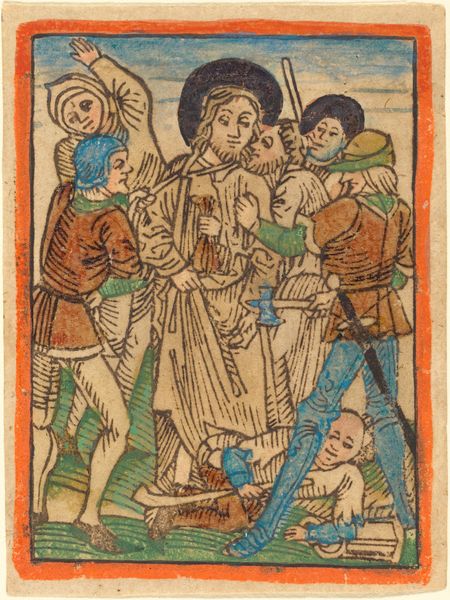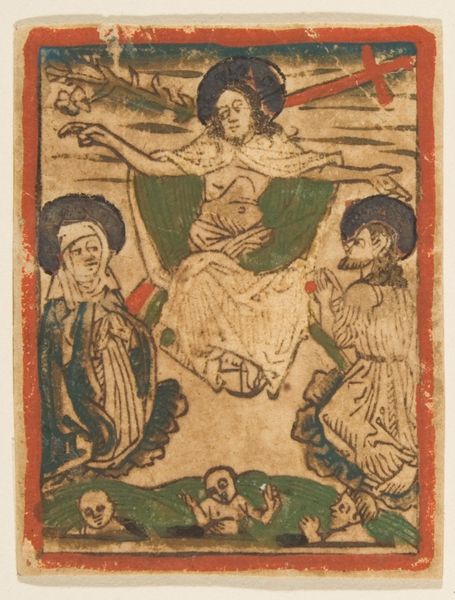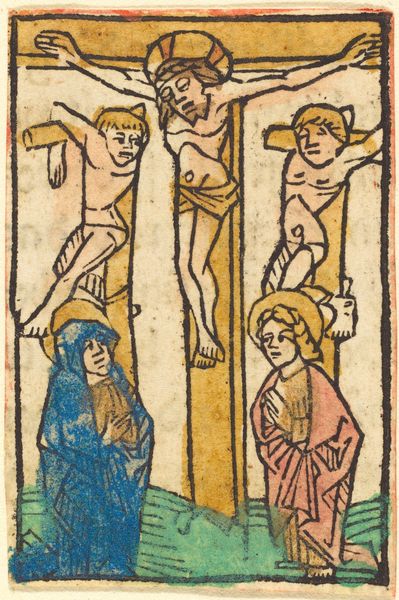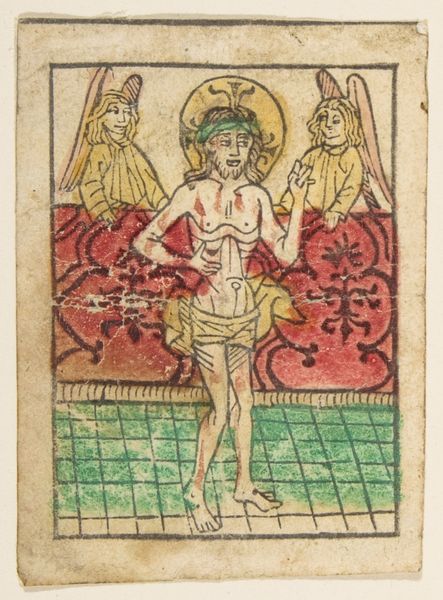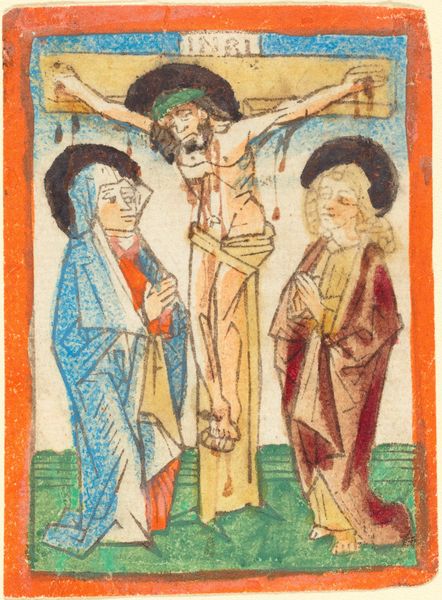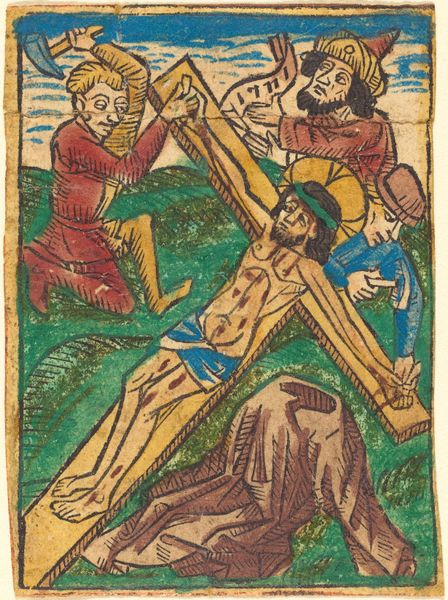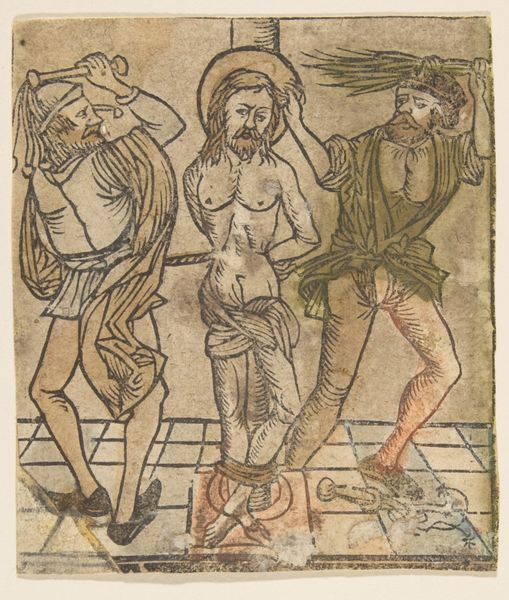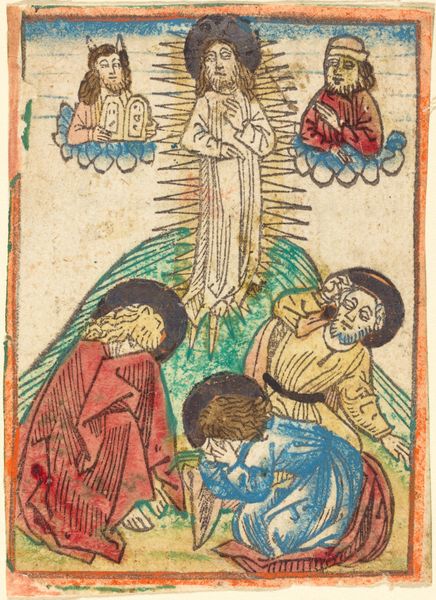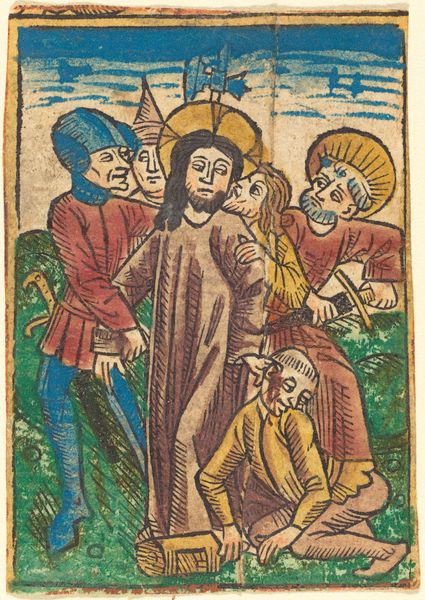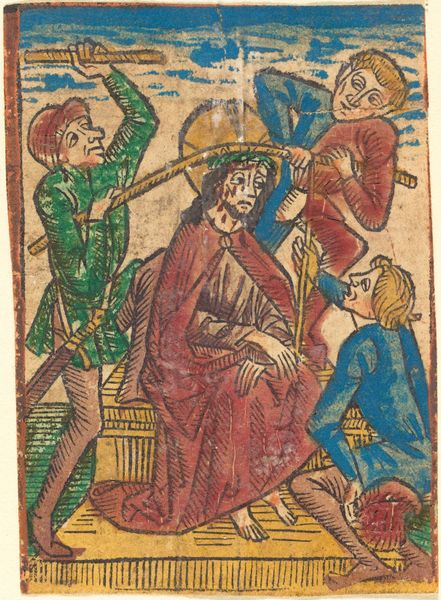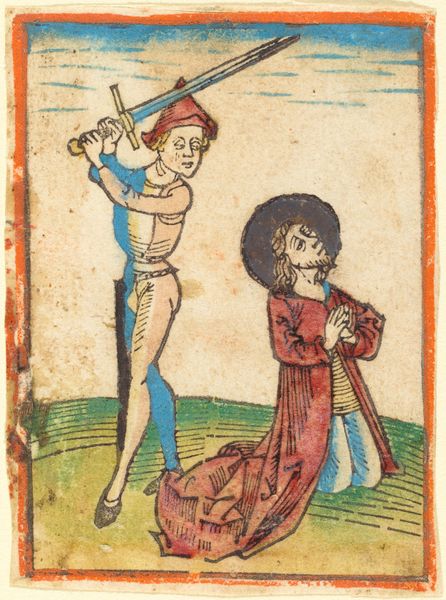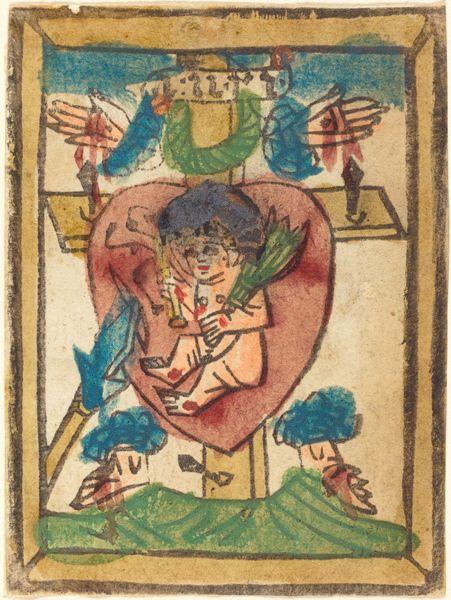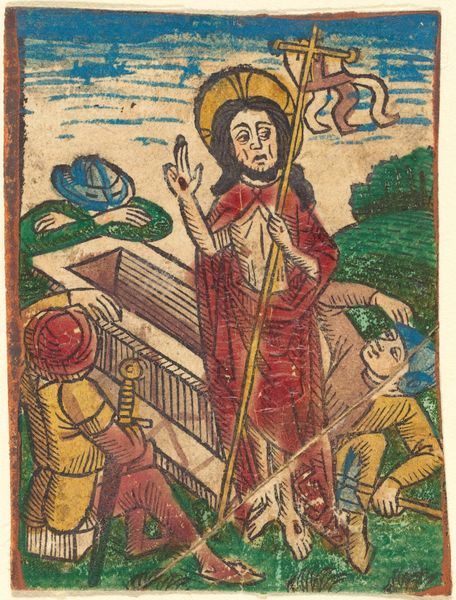
coloured-pencil, print
#
coloured-pencil
#
medieval
# print
#
figuration
#
coloured pencil
#
history-painting
Copyright: National Gallery of Art: CC0 1.0
Curator: Let's take a closer look at this piece titled "The Ecstasy of Mary Magdalene," a print colored with pencil, dating back to around 1480. What’s your immediate response to it? Editor: It's raw, I think, visually direct. The crude print lines are prominent. There's little attempt to disguise the making, and the colored pencil lends a handcrafted feel. The landscape below looks quite barren. Curator: Indeed. I think that rawness speaks volumes, especially when we consider Magdalene’s position within religious narratives – often silenced, objectified, but here seemingly centered. There's a boldness to placing her figure, nude and haloed, at the visual core, disrupting conventions. Her hair functions almost like a veil. Editor: I'm fascinated by the colored pencil work here. Given the probable function as a devotional image or for dissemination, I’d wager that its hand-coloring would’ve been the work of laypersons or in workshops to amplify access and availability. This is reproductive, in a sense. Curator: Exactly, and the repetition becomes fascinating. Who controlled her image? How was she used? Her nudity is interesting; there's nothing sexual about her expression. What kind of message was the image intended to send, I wonder. Editor: Well, given it's 1480, that type of coloring by lay people or a lower echelon of practitioners opens doors to variable interpretations as these pieces went out into circulation and trade. Look at those stylized mountains—how much does the limited color and simplified landscape signal a sort of efficient division of labor. How quickly and cheaply could these prints be made. Curator: Absolutely. This wasn't high art; it was art for the masses. This image speaks to the democratization of religious imagery through material practices. It reminds us how labor, accessibility, and devotion were intertwined during this period. Magdalene then becomes not only a historical or biblical figure but a point of intersection between devotion, manual reproduction and labor practices. Editor: Precisely. That tension between mass production and hand-crafted embellishment, the spiritual elevated by these humble means; that’s where its real interest lies for me. It takes religious experience into an entirely other territory. Curator: I think what lingers for me is the persistent re-shaping of Magdalene and how we participate in that ongoing project by viewing and analyzing artwork like this. It challenges our ingrained understanding. Editor: It's a fascinating reminder that even centuries-old images were enmeshed in the mundane concerns of making, consumption and class dynamics that speak very clearly to the making of our modern experience today.
Comments
No comments
Be the first to comment and join the conversation on the ultimate creative platform.
